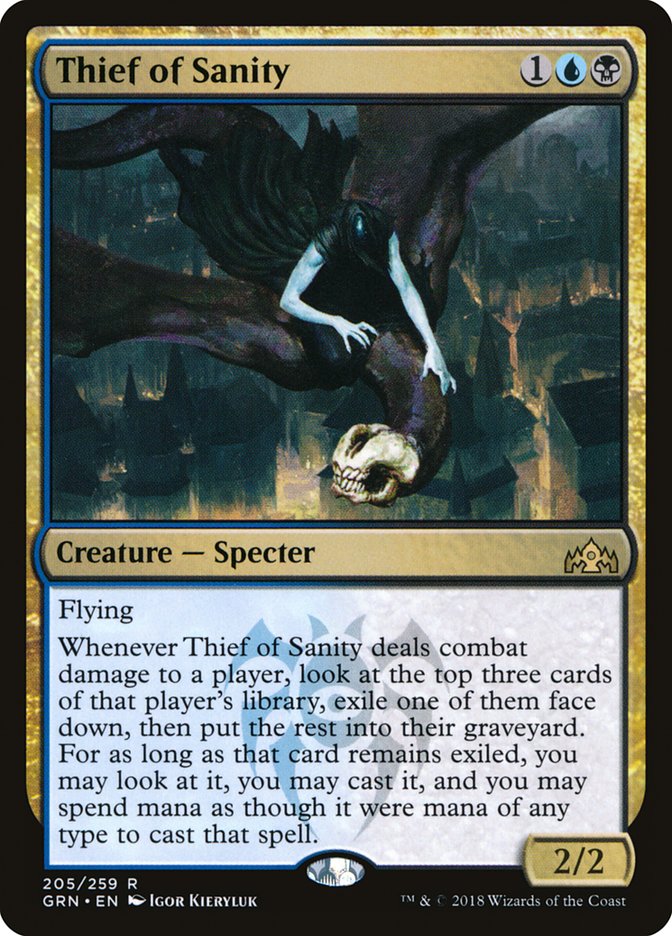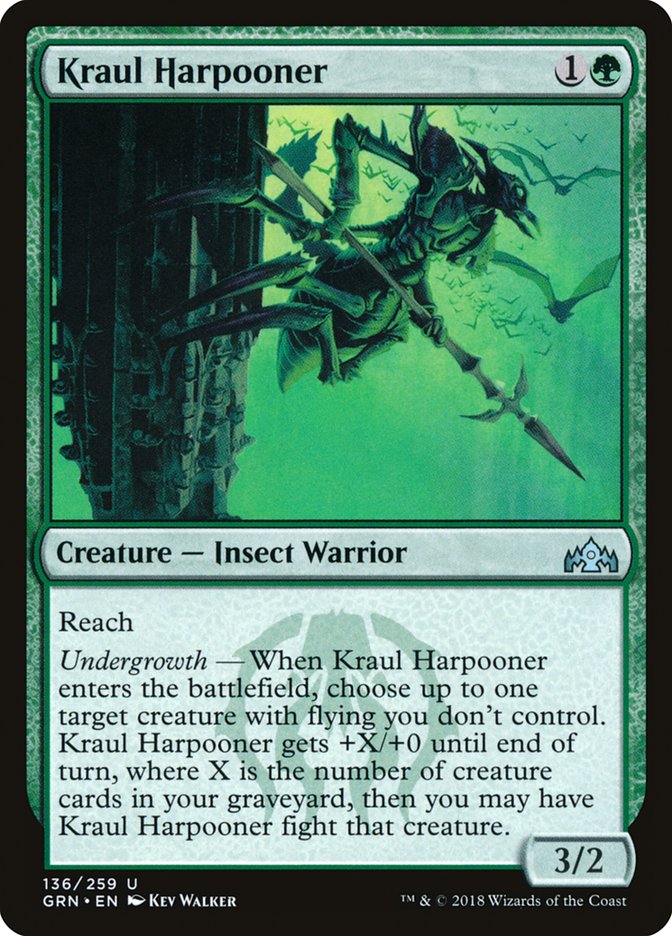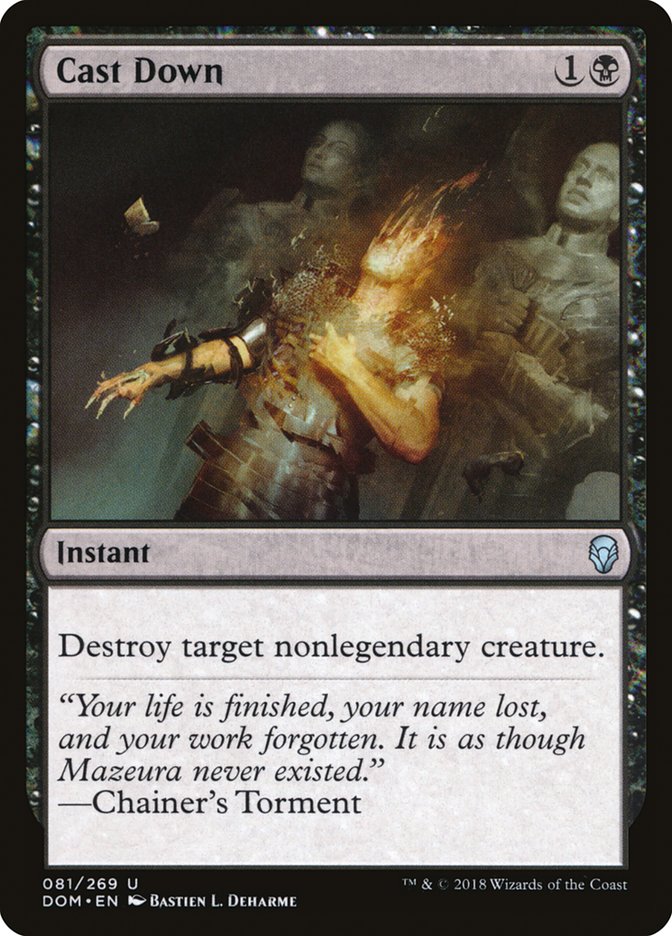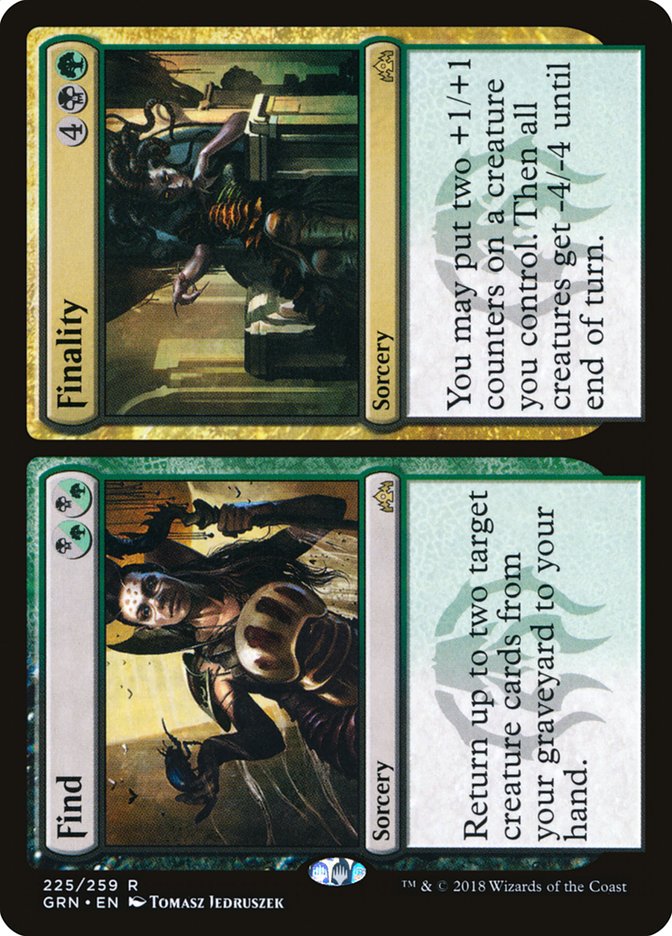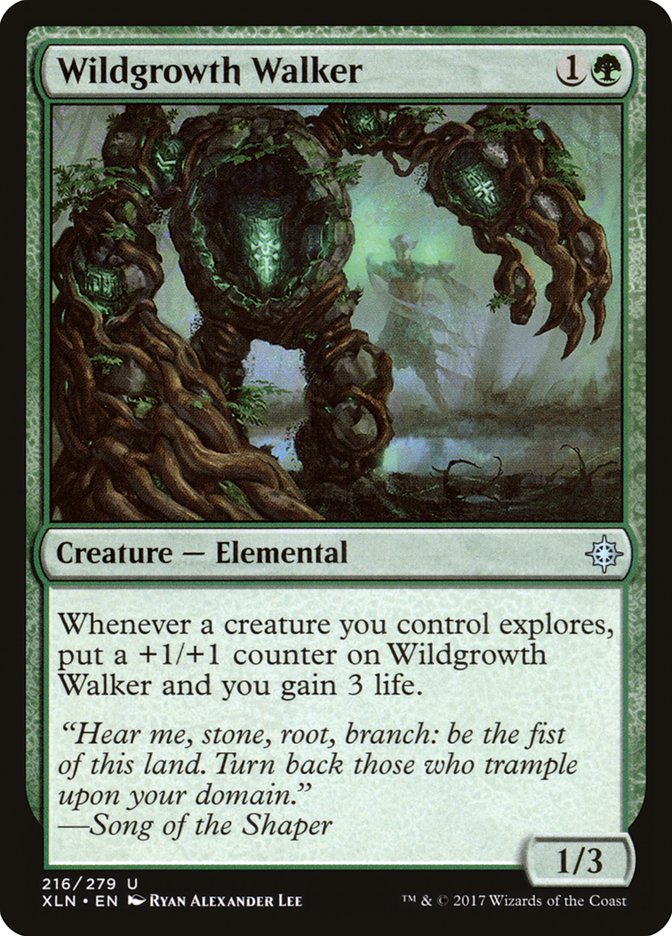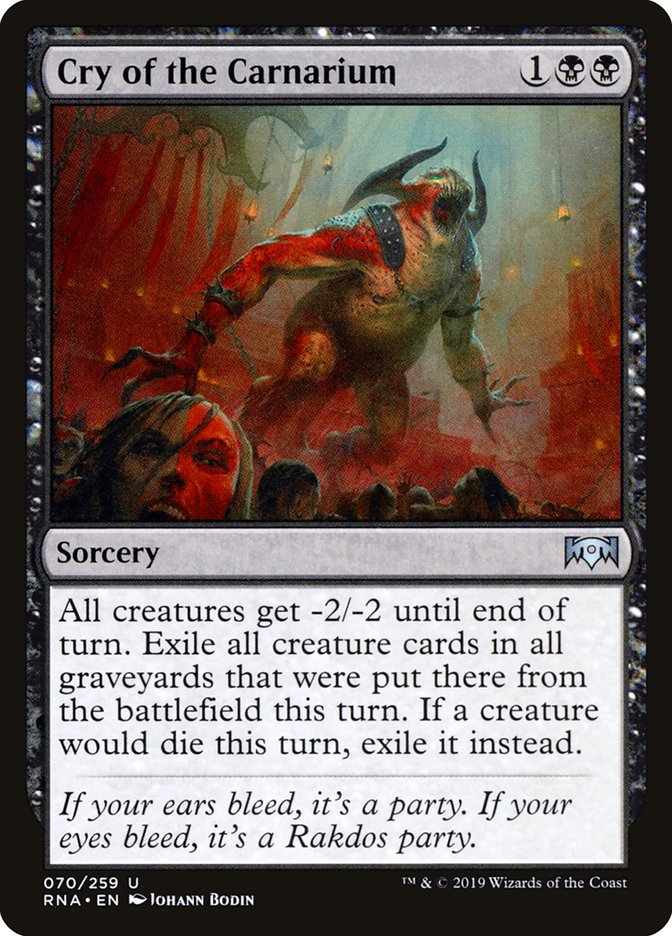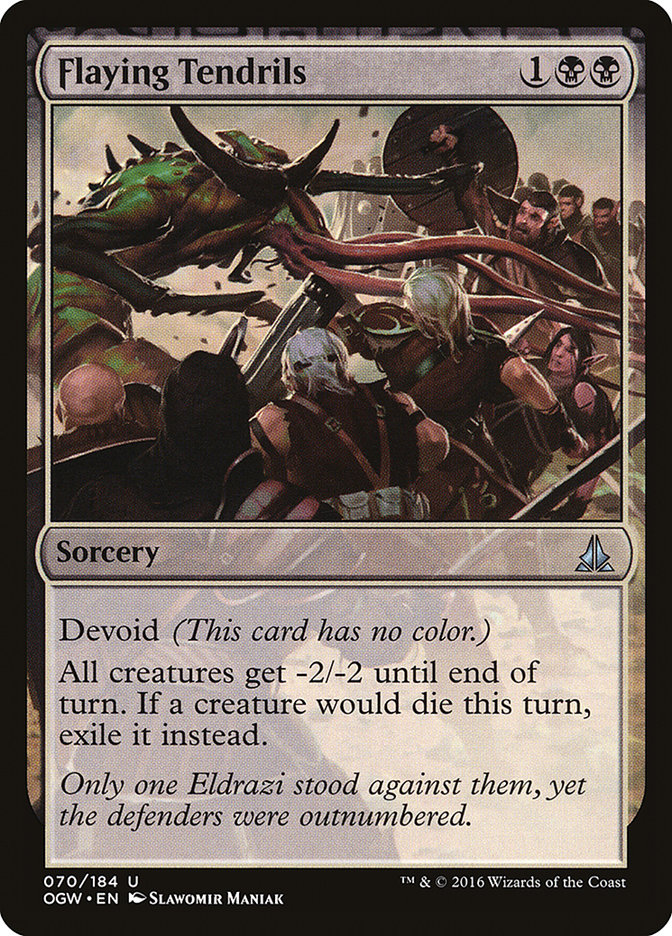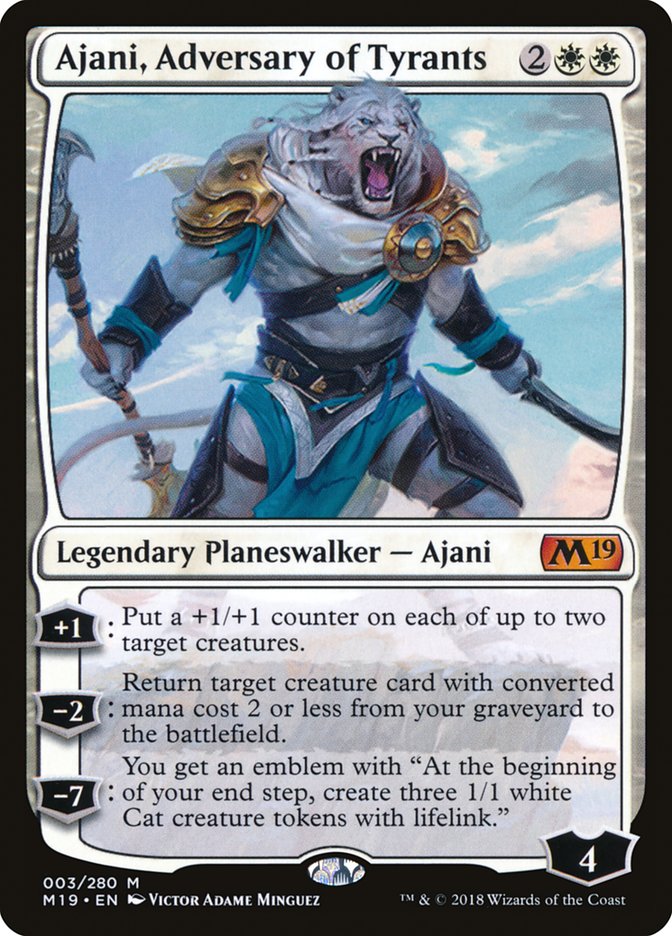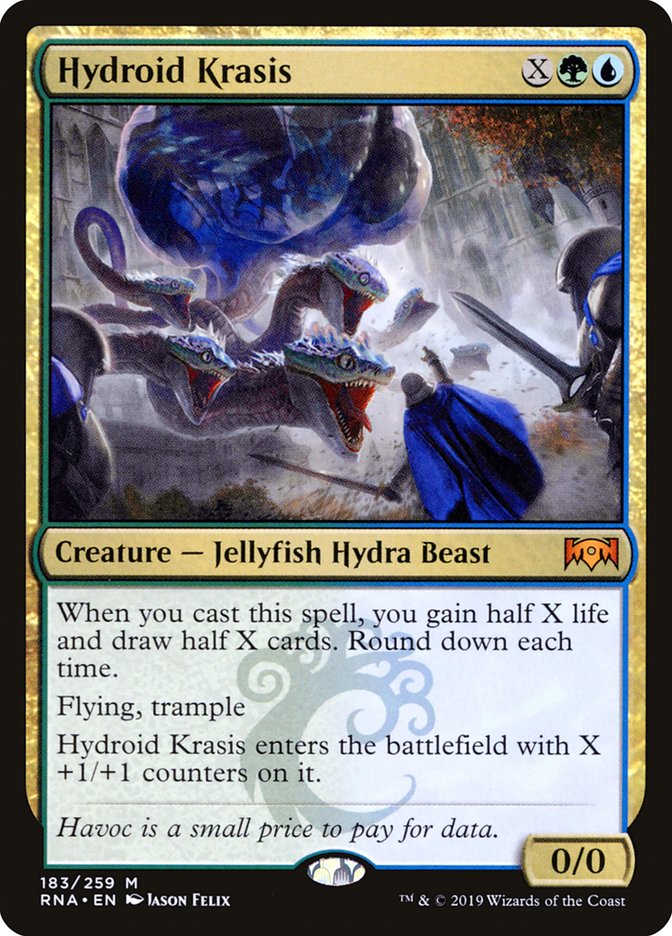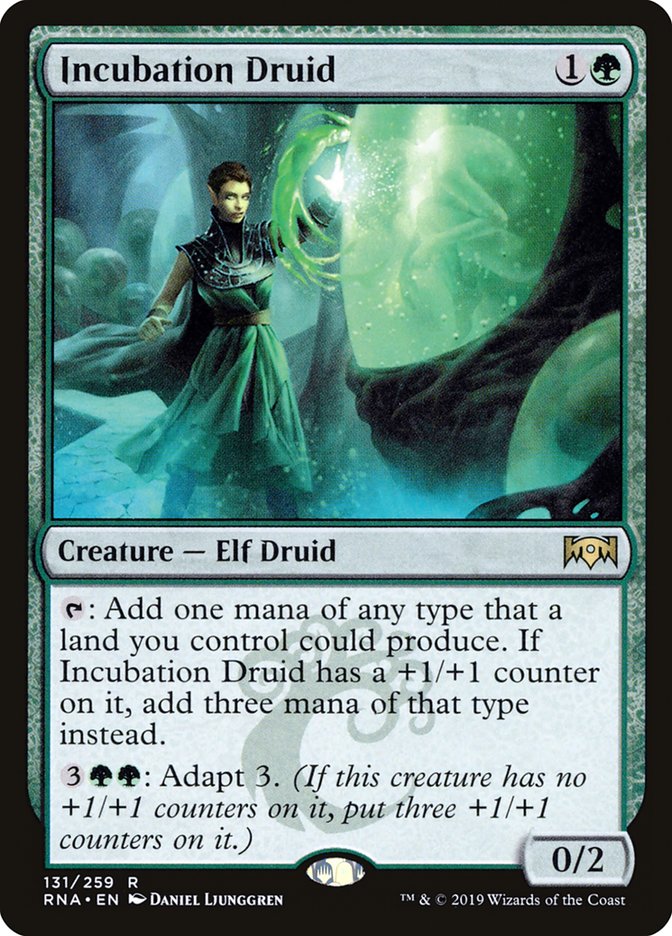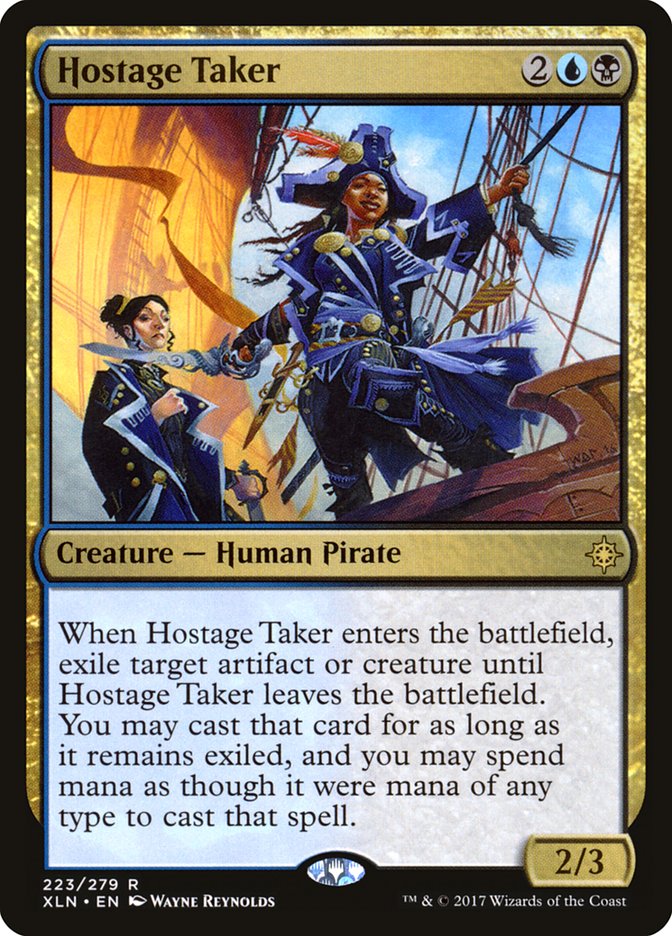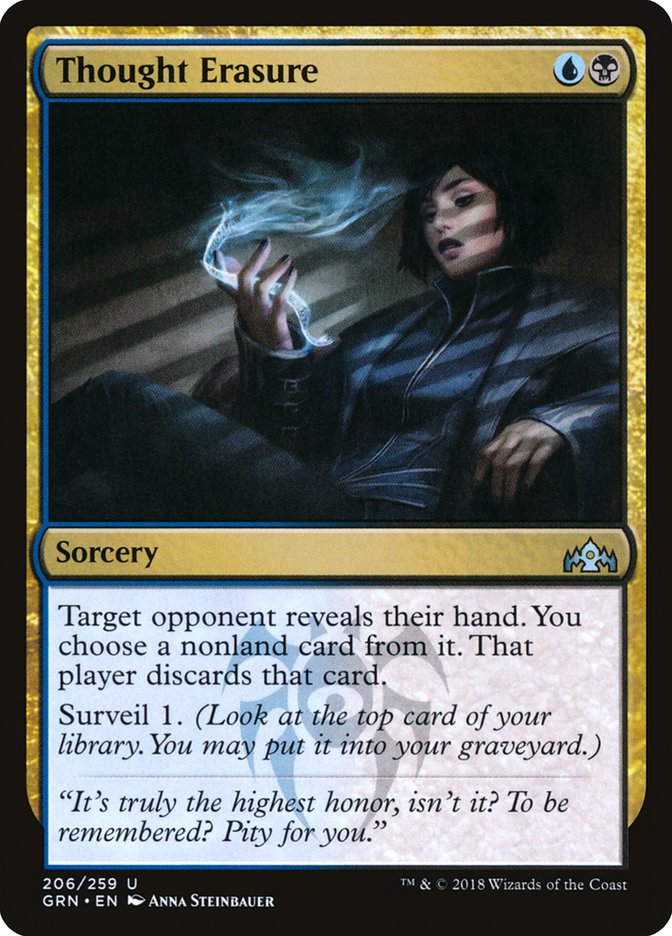Mythic Championship Cleveland was the most fun I’ve had playing in a tournament in recent years. Both Draft and Constructed were a lot of fun, which really helps, both when I was winning and when I was losing. What’s more, the whole MagicFest thing, having Grand Prix going on at the same site, was extremely sweet. There were just so many more people to talk with, hang out with, and generally just have good times with. I prefer hanging out at Grand Prix to playing, whereas I prefer playing in Pro Tours to hanging out at them. This really was the best of both worlds.
As for the formats themselves, as I mentioned, I’m a fan. I think the Nexus of Fate stuff is pretty toxic, but I don’t think it’s the best strategy, or anything. The Draft format seemed relatively straightforward, which was refreshing. I was kind of just Prereleasing this one, but managed a 4-2 record on the back of fundamentals and probably some good fortune.
As for Constructed, I ran the Sultai Midrange deck from my article last week, finishing 6-3-1. The only difference was an eleventh-hour replacement of the third maindeck Harpooner with a second Vraska’s Contempt, wanting to slightly hedge on my decrease in removal.
Creatures (27)
- 4 Llanowar Elves
- 2 Hostage Taker
- 4 Wildgrowth Walker
- 4 Merfolk Branchwalker
- 4 Jadelight Ranger
- 1 Ravenous Chupacabra
- 2 Thief of Sanity
- 2 Kraul Harpooner
- 4 Hydroid Krasis
Planeswalkers (3)
Lands (25)
Spells (5)

Overall, I was quite happy with the deck, though I would make a couple changes, which I’ll get into in a moment. My records against various archetypes were as follows:
- Simic Nexus 2-0
- Nexus of Gates 1-0
- Mono-White Aggro 1-0
- Esper Control 1-1
- Mono-Blue Aggro 1-1
- Sultai Midrange 0-0-1
- Big Rakdos 0-1
My list was fairly stock, though most people don’t maindeck Thief of Sanity, and very few people maindeck Kraul Harpooner.
Most other people play something like three Cast Downs and another Find // Finality instead.
In retrospect, I think the room still just doesn’t give enough credit to Mono-Blue Aggro and Thief of Sanity. Nevertheless, I think the maindeck Kraul Harpooners are just wrong. They really should just be Cast Downs. I even drew Kraul Harpooner against a Mono-Blue opponent Game 1 and lost, getting beaten down by a Mist-Cloaked Herald with two Curious Obsessions on it. Would Cast Down have saved me? Nah. When I drew it, he had Wizard’s Retort up and it was already too late. However, it just goes to show how much Kraul Harpooner may be a great tool against them, but it’s far from unbeatable and not necessarily always better than Cast Down anyway.
Did Kraul Harpooner help me snag that 3-0 record against Nexus decks? Definitely, but it’s not like it’s exciting there, either. I mean, I still sideboard it out. It’s better than drawing a dead card, but it’s not overwhelmingly impressive or anything.
What about Esper? Well, it’s actually a more exciting card against them after sideboarding, letting you hedge against Thief of Sanity without committing to a bunch of reactive cards. Playing Cast Down Game 1 would definitely be worse than a 3/2 for two, but I think the Cast Downs would have been better against the field as a whole.
Thief of Sanity was good for me, and I’m generally inclined to stay with the two plus two plan. It’s just so high impact against Nexus and Esper decks, while being tactically useful against Mono-Blue and the mirror.
I originally cut a Find // Finality after seeing how many people sideboard it out in so many matchups; however, I now believe people sideboard too many out, too often. Don’t get me wrong, I’m still usually sideboarding them out against Mono-Blue and Nexus, but I actually liked it moderately against Esper, and I definitely liked it against Big Rakdos. That it’s a superstar in the mirror and against Mono-White is a known feature.
If I were going to register a deck tomorrow, this would be my new list:
Creatures (25)
- 4 Llanowar Elves
- 3 Hostage Taker
- 4 Wildgrowth Walker
- 4 Merfolk Branchwalker
- 4 Jadelight Ranger
- 2 Thief of Sanity
- 4 Hydroid Krasis
Planeswalkers (3)
Lands (25)
Spells (7)

The one change I’m still trying to figure out how to make happen is getting the fourth Hostage Taker into the maindeck. I think it’s just enough better than Ravenous Chupacabra to go all the way, and I think having Hostage Taker advantage Game 1 is just unreal in the mirror. Besides, 2/3s just block so much better than 2/2s against Mono-White.
As much as I like Thief of Sanity, I’m definitely open to the possibility that it’s where I’m supposed to get the room (at least maindeck). Ari Lax is definitely a lot cooler on the card than I am and presents his case here, as well as diving deep into updating Sultai after this weekend.
I know Wildgrowth Walker has been a point of contention in this strategy, but I had great experiences with it. I definitely sideboard it out in a few matchups, but on the whole, the lifegain and battlefield presence were well worth the price of admission. Depending on the metagame, I could see moving some or all of them to the sideboard, but running four in the 75 seems important, at least as currently imagined.
One card I want to revisit is Cry of the Carnarium. It’s not a perfect fit for the strategy, but I think the folks like Corey Burkhart that were playing one last week were probably right, as the added dimension would be high-leverage, and it’s the perfect spot on the curve.
There was an incident involving Marcio Carvalho where he sacrificed a Dauntless Bodyguard in response to a Cry of the Carnarium. When the Cry resolved, he exiled his other creatures; but bafflingly, Cry of the Carnarium is worded differently from cards like Flaying Tendrils, and actually looks backwards, at any creature that died this turn. Presumably, this was a “safety valve” against recursive creatures like Arclight Phoenix, albeit an awkward one to track in paper at times.
Marcio would go on to eventually return the Dauntless Bodyguard with Ajani, Adversary of Tyrants, evoking a wave of internet furor from a hundred players who clearly all knew that is how Cry of the Carnarium works and would never have assumed it worked like every other one of those cards.
There’s a dangerous and seductive temptation to bandwagon specific people when there’s already a popular acceptance of targeting them. While it’s important to speak up about stuff, it’s also important to keep perspective, check your biases, and ask yourself if it passes the smell test. Marcio has been one of the most scrutinized players of the past four years and has been going above and beyond to avoid even the slightest appearance of impropriety. During that time, has Top 8’ed four morePro Tours, on top of the two he already had. He was also the finalist of a World Championship, Top 4’ed the MOCS, and won multiple Grand Prix.
When I first heard the story, I didn’t even realize the issue, as I had also mentally chunked Cry of the Carnarium with Flaying Tendrils. You might be saying, “He should have known better. He tested a lot for this event”. Well, first of all, lots of other people here tested for this event and didn’t know, either. Second, as I understand it, this interaction was bugged on Arena last month, where it was basically functioning as you would expect of Flaying Tendrils. I have faced several Pro Tour opponents that were sure of an interaction, only to discover that they had not realized that Magic Online was bugged.
Anyway, I really don’t think this is the spot for an angry mob. Yoshihiko missed the replacement effect, too, and he prepared for the event, and even had the card in his own deck. I don’t know; I mean, who knows, but like even if you thought there might be wrongdoing, how confident are you? Are you 51% sure? Are you 75% sure? Are you really willing to DQ an innocent player to DQ three guilty ones? That seems absurdly too low of a threshold to me, and besides, in this case, I think it’s pretty highly unlikely that there was any intentional wrongdoing at all.
I had a situation in Round 13 of the tournament that actually looked really bad for my opponent, Naonari Hoshide. We were 42 minutes deep into Game 1 of the Sultai Midrange mirror match. I had eight creatures and 75 life to his six creatures and 69 life (and my biggest Wildgrowth Walker was much bigger than his). We each had fourteen land, and I was up a Vivien Reid. I know he has a Hydroid Krasis and a Hostage Taker among the cards in his hand. He knows I have two Hydroid Krasis.
He wants to count my library during his main phase. He counts it and says eighteen, which I count and confirm. He counts his library and tells me “seventeen.” I asked, “There are seventeen cards left in your deck?” He confirms, “Yes, there are seventeen cards left.” At this point, I look at his deck, and even though he has bigger sleeves, it looks a little heavy to be only seventeen. I count it, and sure enough, it’s 22.
I call a judge and they begin a lengthy investigation, eventually starting the next round without us. They had two opponents waiting for us and given that we were both out of contention already, the disruption from our pairings being a little weird if we drew wasn’t as bad as holding up the entire tournament for such a long time.
Why does it matter that he said seventeen instead of 22? If I think I have one card more than him in my deck, he must be the first to act, the first to commit to making a big play, or I will just win eventually. Acting second is very advantageous here; for instance, if he draws cards with a Krasis, I can draw an amount of cards that preserves the inevitability. If I draw cards first, however, he will only draw enough so that now he has inevitability. If I know he has 22 to my eighteen, I will draw cards aggressively, setting up my two maindeck copies of Thief of Sanity. If I think the count is off (and favoring a different player) for even a single turn, I will make substantially different plays.
A little backstory. I played this same gentleman the day before. He was nice and polite, but he did try tapping his Incubation Druid for mana none of his lands could produce, which would have been game-winning. Okay, mistakes happen. No biggie. More importantly, we had a strange encounter at the beginning of the match. I picked up two dice and asked him “Odd or Even?” He responded, “Odd.” I then rolled a four, at which point he reached to his dice and said, “High Roll.”
I was like, “What? You said, ‘odd’.” To this, he responded, “Oh, I start?” (in reference to himself). I said, “No, I start. My roll was even.” Without even missing a beat, he says, “Oh, okay.” And like that, we’re on our way.
Okay, let’s take a step back here. While he sure appeared to call “odd” in response to my question about odd or even, let’s suppose for a second that I misheard him, or that there was some amount of language barrier (he is Japanese, but speaks English). If someone really thought we were high rolling and their opponent said, “What, you said odd?” then who responds with “Okay, so I start?” And furthermore, when they are told they don’t start, who just says “Oh, okay.” in response? I’m not saying that’s enough to take action on, but it sure is suspicious, you know what I mean?
Anyway, in the Sultai match on Day 2, his explanation was that he counts in piles of five and just miscounted. This is obviously extremely awkward, as it’s such a convenient mistake to make, so perfectly providing the maximally misleading information. And if I hadn’t counted and stopped things there, what would I have done on a later turn when I discover the count being off?
The final ruling was that while this looks bad, there isn’t sufficient evidence of intent, etc. to DQ him. We would go on to draw, with my hitting him with Thief of Sanity during turns, ensuring he would be decked. Is it frustrating to notice someone doing something illegal and extremely advantageous, only to have them receive a warning, before eventually drawing a won game? Of course. However, in my heart of hearts, I can’t disagree with the judges. I don’t know what probability I would assign to the possibility of my opponent intentionally cheating, but it’s not 75%.
I just feel bad for my next opponent, who had been sitting at our table waiting for twenty minutes for me to show up, only to lose the die roll with Simic Nexus and then be staring down my Turn 2 Thief of Sanity on the play…
While we’re on the topic of controversy, there was a little hubbub around my Round 7. After starting Day 1 off with a 3-0 draft (6-0 games), my first three rounds of Constructed had me off to a great start, 6-0, leading to Rob Pisano and me squaring off in a feature match.
Late into Game 3, he Teferi-locks me and has drawn his whole deck, so will just draw Teferi each turn, while I have no permanents. He has a Hostage Taker and an 11/11 Hydroid Krasis, which is conveniently exactly enough to kill me from 26 in the final turn of extra turns. During his second to last turn, he’s getting excited and, without thinking about it much, throws two more Hostage Takers onto the table without exiling anything.
Hostage Taker has a mandatory trigger, and it can (and must) target your own stuff. While the judges correctly did not intervene, there were some viewers that believed that I could have forced a draw by strategically putting my opponent’s Hostage Taker triggers on the stack.
Their theory was that the second Hostage Taker would have to exile either the first Hostage Taker or the Krasis. If it hits the Krasis, Rob won’t have enough damage to kill me, so let’s assume he hits the first Taker. Now the third Taker will have to hit something, and if he tries to choose the second Hostage Taker, it will free the first, which will then have to choose something. Basically, it will be a loop that he will have to say how many times he is doing, before eventually making the other choice, hitting the Krasis, ensuring the draw.
There are several problems with this, however. Let’s start with the fact that my opponent threw both Hostage Takers onto the table. Does this mean they are both on the battlefield? Are they both on the stack? Is one on the battlefield and one on the stack? If he gets to miss either Taker’s trigger, he’s fine, so let’s assume I am going to try to put both of his triggers on the stack. Where is the third Hostage Taker at the time the second one’s is resolving?
If they’re both on the battlefield, he can just choose the first Hostage Taker with both triggers, making the second one countered upon resolution. Okay, let’s say he’s only cast one, are we really not backing up and forcing him to resolve the first trigger, at which point he doesn’t cast the third Taker?
But okay, let’s assume they’re advocating that I argue that he’s clearly indicating casting both Hostage Takers, and then with the third Hostage Taker on the stack, I force him to put the second one’s trigger on the stack. To what end? He has drawn his whole deck. I know he has Vraska’s Contempt, Absorb, etc. It’s easy for him to break up the Hostage Taker loop manually. Could I have argued that for the chance that maybe he doesn’t think to kill or counter his own thing? I guess; but the whole thing didn’t feel right to me, to say nothing of being wildly ineffective. I dunno, maybe other people value different things than me.
Setting all that aside, there was another play that might be of interest. In Game 2, I Duress Rob on Turn 2, seeing Search for Azcanta, Cast Down, Negate, Absorb, Kaya’s Wrath, and two land. Turn 3, I cast a Merfolk Branchwalker, keeping a Thief of Sanity on top. He chooses to play his Watery Grave tapped, rather than keeping Absorb up. Of course, he has that Cast Down and Kaya’s Wrath, though, so he’s not really risking much.
I passed the turn without casting the Thief, and Rob just passed the turn back, missing his land drop. On my next turn, I cast the Thief of Sanity and pass the turn back, missing my land drop. Why did I wait a turn? On the surface, the story makes sense. Afterall, Rob missed his land drop, so maybe Kaya’s Wrath is less likely to punish me. Rob doesn’t have the fourth land, so he casts Cast Down on my Thief and untaps. At this point, he suspects Vivien Reid may by my eventual play, and he wants to snag it with Thought Erasure before I find that fifth land. Besides, he really wants to dig into a fourth land himself.
When he casts Thought Erasure, he discovers not only that I have two Vivien Reids, but that I actually already have the fifth land and just chose not to play it. On my turn, I’m able to cast a Vivien Reid, finding a Hydroid Krasis. Rob draws his fourth land on the following turn (thanks to surveil digging him one card deeper), and Vraska’s Contempt takes out my Vivien Reid. Nevertheless, the Vivien Reid giving me an extra Hydroid Krasis begins a gradual snowballing of card advantage that eventually carries me over the top.
Anyway, yeah, yeah, yeah, I know Mono-Blue, Esper, White Aggro, Nexus of Fate, all kinds of not Sultai decks made the Top 8, and Sultai didn’t. Obviously, Draft played an important role, but I guess I also just think there’s room to improve the Sultai lists. Besides, regardless of anything else, I think all five of those decks are at least in the same ballpark of power, so I’d recommend playing whichever fits your playstyle best.
As long as your playstyle doesn’t involve Mountains.


